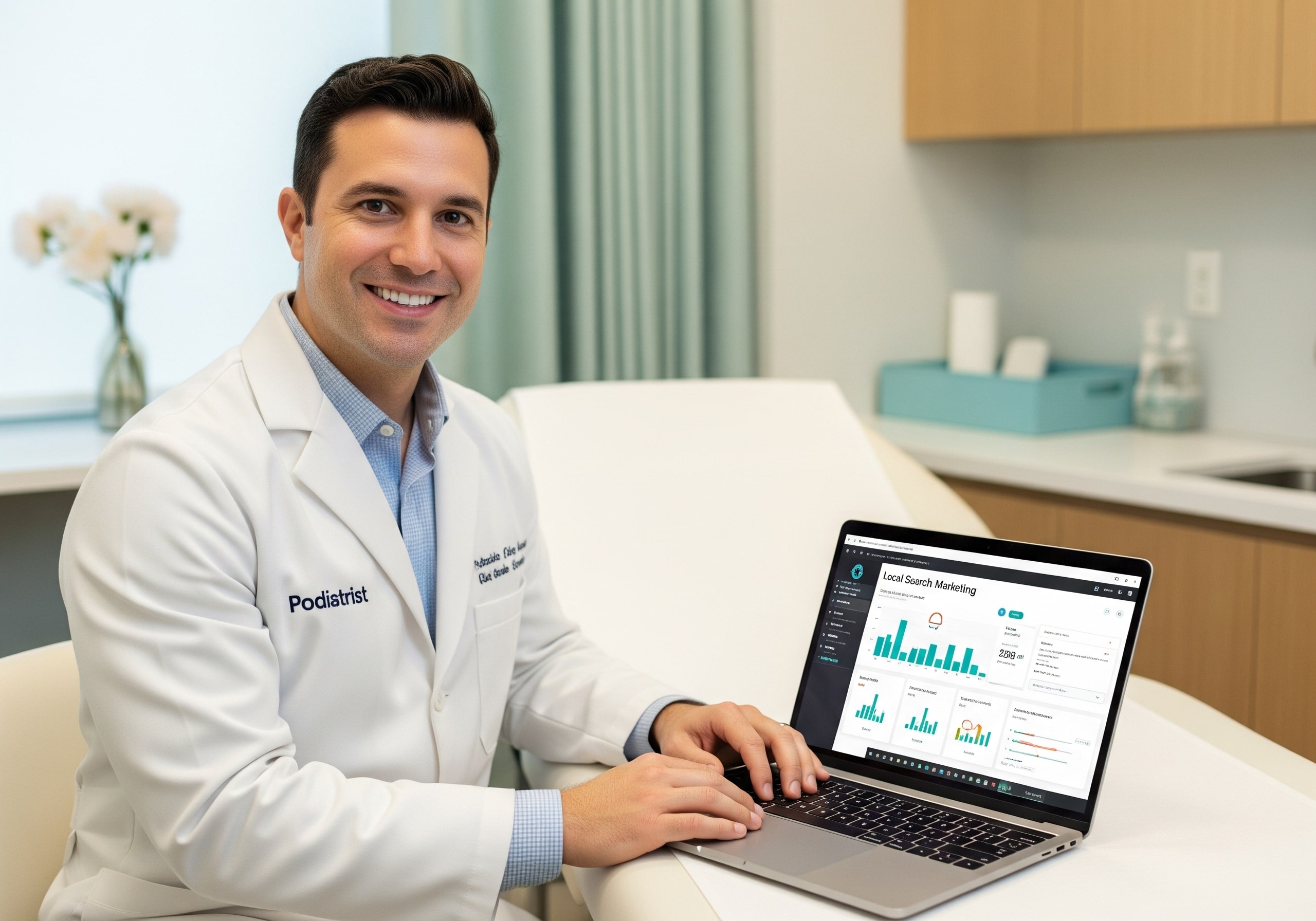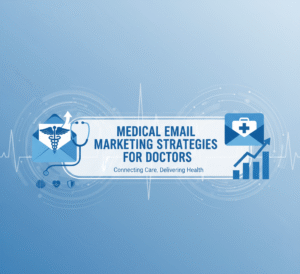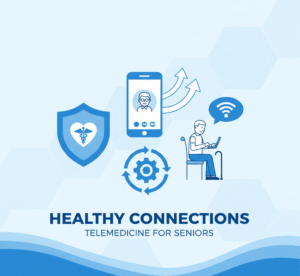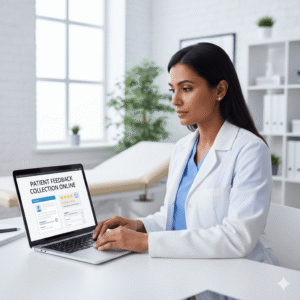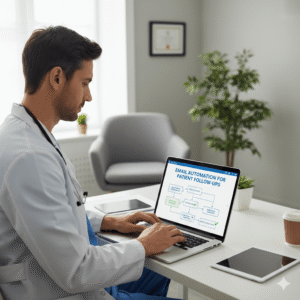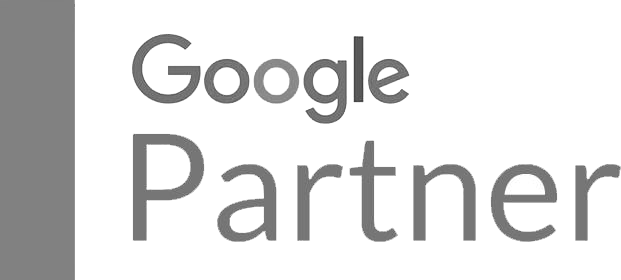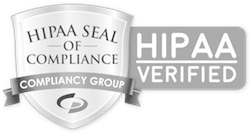“Gain insights into podiatry clinic local search marketing with proven strategies to attract more patients.”
A strong online presence is essential for any business in today’s digital world. For podiatry clinics, attracting local patients requires a focused approach. This means embracing local search marketing. It’s not about complex tricks. Instead, it involves consistent effort and innovative strategies. You can draw in more patients right in your geographic area.
Local visibility is a game-changer. Think about it. When someone needs a “foot doctor near me,” they often turn to their phone. They expect quick, accurate results. You miss out on new patients if your clinic isn’t easily found. Incorrect or outdated information can send potential patients elsewhere. This article explores proven local SEO strategies. These tactics are designed specifically for podiatrists. They help you get seen, get found, and get more appointments.
Why Local SEO Matters for Podiatrists
Podiatry is a localized service. Most patients look for a clinic close to home or work. This makes local search engine optimization, or local SEO, incredibly important. Unlike large corporations, your target audience is geographically specific. Your marketing efforts should reflect this. A “local first” approach is key. This strategy ensures you connect with people actively seeking your services in your community.
Local SEO helps you rank higher in search results. When someone types “podiatrist near me” into Google, you want your clinic to appear at the top. This increases your chances of being chosen. It builds trust and credibility. It shows you are a reliable option in their area.
Optimizing Your Google Business Profile: Your Digital Front Door
Your Google Business Profile (GBP) is often a new patient’s first impression of your clinic. Think of it as your digital storefront. It’s free, and optimizing it is critical for local search success. This is where many potential patients will find your hours, address, phone number, and even read reviews.
Accurate and Detailed Information
First, ensure all your information is accurate and complete. This includes your clinic’s name, address, and phone number (NAP). Make sure these details are consistent everywhere online. This consistency is a strong ranking signal for Google. Any discrepancies can confuse search engines and potential patients.
Next, choose your primary and secondary categories carefully. For a podiatry clinic, “Podiatrist” will likely be your primary. You might also add “Foot Care” or “Diabetic Foot Care Specialist” as secondary categories. These help Google understand precisely what services you offer.
Showcase Your Services and Attributes
The GBP allows you to list specific services. Go into detail here. Do you offer bunion treatment, ingrown toenail removal, diabetic foot care, or sports injury podiatry? List them all. This helps you appear in searches for those specific conditions. The more detailed you are, the better.
Use the “attributes” section to highlight unique aspects of your clinic. Do you have wheelchair accessibility? Offer telehealth appointments? Provide same-day appointments? Include these. They can be deciding factors for patients. Showcase custom products if you offer specialized orthotics or foot care products. This sets you apart from competitors.
Engaging with Photos and Posts
High-quality photos make your profile more appealing. Include interior and exterior shots of your clinic. Show your team in action. Patients like to see where they will be treated and who will be treating them. Update your photos regularly.
Use the GBP posts feature to share updates. Announce new services, special offers, changes in hours, or health tips. These posts keep your profile active and engaging. Google favors active and updated profiles. This continuous engagement signals that your business is current and relevant.
Hyper-Local Keyword Research: Speaking Your Patients’ Language
Understanding what terms your local patients use to search is vital. This is hyper-local keyword research. It goes beyond general terms. It focuses on how people in your specific area search for podiatric care.
Incorporating “Near Me” Searches
Many people search for “foot doctor near me” or “podiatrist [your city/town].” Your content must naturally incorporate these phrases. Don’t just stuff keywords in. Make them part of your natural language.
Think about specific neighborhoods or landmarks. For instance, if your clinic is in Giza, Egypt, you might target “podiatrist Giza” or “foot specialist Cairo Governorate.” If there are specific districts, like Zamalek or Maadi, consider including those too. This precision helps you capture highly relevant local searches.
Long-Tail Local Keywords
Beyond basic “near me” searches, consider longer, more specific phrases. These are called long-tail keywords. Examples include “best bunion surgery specialist Giza” or “diabetic foot care clinic Cairo.” While these searches have lower volume, they indicate strong intent. People using them are often ready to book an appointment.
Use tools to identify these keywords. Google Keyword Planner or other SEO tools can help you discover what local terms people are using. Always aim for keywords that accurately describe your services and your location.
Location-Based Content: Building a Local Hub
Your website isn’t just a brochure. It’s a powerful tool for local SEO. Creating relevant, location-based content boosts your local search rankings and provides valuable information to potential patients.
Service-City Pages
A highly effective strategy is to create dedicated “service-city” pages. These pages focus on a specific service offered in one location, such as “Bunion Treatment in Giza” or “Ingrown Toenail Removal in Zamalek.”
These pages should be precise, local, and patient-focused. Include details about your experience with that specific service. Add information relevant to the local area. This might include directions to your clinic from local landmarks. Mention local events or community involvement. Use local imagery to make the content resonate with residents. Incorporate elements like before-and-after images of successful treatments. Discuss financing options if applicable. This builds trust and shows you understand their local needs.
“Areas We Serve” Pages
Creating an “Areas We Serve” page is also beneficial. This page lists all the neighborhoods, towns, or cities your clinic serves. For each area, you can include a brief description. Mention how your clinic helps residents from that specific area. This signals to Google that you are relevant for searches from those locations. It broadens your local reach.
Blog Content with Local Flavor
Your blog is another excellent platform for local content. Write articles that address local health concerns related to podiatry, such as “Common Foot Problems for Runners in Giza” or “Choosing the Right Footwear for Summer in Cairo.” These articles provide value to your local audience and naturally incorporate local keywords, further strengthening your local SEO.
Managing Local Citations: Consistency is King
Local citations are online mentions of your clinic’s NAP (Name, Address, Phone number). These appear on business directories, social media platforms, and other websites. Consistency across all these citations is crucial for local ranking signals.
What are Local Citations?
Think of sites like Yelp, Yellow Pages, and local chambers of commerce. These are examples of directories where your clinic should be listed. Each listing is a citation. Google uses these citations to verify your business information. The more consistent and accurate your citations, the more trustworthy your business appears to Google.
Manual vs. Automated Citation Building
You can manually submit your clinic’s information to various directories. This can be time-consuming. Alternatively, you can use citation management services. These tools can automate the process. They help ensure your NAP is uniform across many platforms. A slight difference, like “St.” instead of “Street,” can confuse search engines. Pay close attention to these details.
Suppressing Duplicate Listings
Sometimes, duplicate listings can appear. This often happens if your clinic has moved or changed its name. Duplicate listings dilute your SEO efforts. They can also confuse potential patients. Actively identify and suppress or merge any duplicate listings. This maintains a clean and accurate online presence.
Patient Review Strategy: Building Trust and Boosting Rankings
Patient reviews are compelling. They influence both your search rankings and patient decisions. Positive reviews build trust. They act as social proof. Google also considers the quantity, quality, and recency of reviews when ranking local businesses.
Encouraging Reviews
Make it easy for patients to leave reviews. After an appointment, politely ask them to share their experience online. You can use automated systems for this. Send a follow-up email or text with a direct link to your Google Business Profile review section. This simple step can significantly increase your review count.
Offer various ways to leave reviews. Some patients prefer Google, while others like Facebook or a specific health review site. Provide options to accommodate different preferences.
Responding to Reviews (Positive and Negative)
Responding to reviews shows you care and value patient feedback. Always respond to positive reviews. Thank the patient for their kind words. A personalized response is even better, as it encourages more positive feedback.
Responding to negative reviews is even more critical. Do so professionally and empathetically. Acknowledge their concerns. Offer to resolve the issue offline. Remember to adhere to IPAA compliance when responding to any negative review. Do not disclose protected health information. Keep your responses general and focused on service improvement. A well-handled negative review can turn a bad experience into a positive one. It can also show other potential patients your commitment to patient satisfaction.
Leveraging Reviews for Content
You can subtly use positive reviews in your marketing. Share snippets on your website or social media. This reinforces your clinic’s reputation. It provides genuine testimonials from real patients.
Local Link Building: Strengthening Your Community Ties
Local link building involves getting other local websites to link back to your clinic’s website. These are “backlinks.” They act as votes of confidence from other reputable local sources. They tell Google your website is trustworthy and authoritative.
Community Partnerships
Form partnerships with other local businesses or organizations. This could include local pharmacies, gyms, or community centers. Offer to sponsor a local event. Participate in health fairs. These activities can lead to natural backlinks from their websites to yours. For example, if you sponsor a local charity run, the event website might link to your clinic as a sponsor.
Local Business Directories and Associations
Beyond general directories, join local business associations. Become a member of your local chamber of commerce. Many of these organizations have online directories. They will often include a link to your website. These links are highly relevant and valuable for local SEO.
Guest Blogging for Local Websites
Offer to write guest posts for local news sites, blogs, or community platforms. Choose topics related to foot health or general well-being. This positions you as an expert. It also provides opportunities for valuable backlinks within the article content.
Technical SEO Advanced Settings: Enhancing Visibility
Beyond content and links, some technical aspects of your website can impact local SEO. These involve structuring your website’s code to make it easier for search engines to understand.
Schema Markup
Schema markup is a type of code you can add to your website. It helps search engines better understand your content. For podiatry clinics, “MedicalPractice” schema markup is highly relevant. This tells Google that your website is about a medical practice. It can include your address, phone number, hours, and accepted insurance plans.
Implementing FAQ schema markup is also beneficial. If your website has an FAQ section, this markup can make your questions and answers appear directly in Google’s search results. This provides immediate value to searchers. It can also increase your click-through rate.
Mobile Responsiveness
Most local searches happen on mobile devices. Your website must be mobile-friendly. It should load quickly and display correctly on all screen sizes. Google prioritizes mobile-responsive websites in its search rankings. A poor mobile experience can drive potential patients away.
Website Speed
Website loading speed is another crucial factor. Slow websites frustrate users and rank lower in search results. Optimizing your images, using efficient hosting, and minimizing unnecessary code contribute to a faster website.
Measuring Your Local SEO Performance: Tracking Your Success
You need to know if your efforts are paying off. Regularly measuring your local SEO performance is essential. This helps you identify what’s working and what needs adjustment.
Google Business Profile Analytics
Your Google Business Profile provides valuable insights. You can track how many people found your business through search or maps. See how many clicked on your website link. Monitor calls and direction requests. These analytics show you direct patient engagement. They help you understand how often people are finding you and taking action.
Geo-Grid Ranking Tools
Tools like Local Falcon offer a “geo-grid” analysis. This shows your clinic’s ranking performance across a specific geographic area. You can see your position in Google Maps and local search results from various points on a map. This helps you identify areas where your visibility is strong and highlights areas where you might need to improve your local SEO efforts. This granular view is constructive for fine-tuning your local strategy.
Website Analytics
Use Google Analytics to track website traffic. Monitor which local pages are getting the most visits. See where your visitors are coming from. This data helps you understand patient behavior on your site. It also shows you if your local content is attracting the right audience.
Continuous Engagement and Adaptation
Local SEO is not a one-time task. It requires ongoing attention. Google’s algorithms change, your competitors’ strategies evolve, and your clinic’s services might expand. Staying engaged and adapting your strategy is key to long-term success.
Regularly update your Google Business Profile. Keep your website content fresh. Continue to encourage and respond to reviews. Monitor your rankings and analytics. Make adjustments as needed. This proactive approach ensures your clinic maintains a strong local online presence.
Partnering for Success: InvigoMedia
Navigating the complexities of local search marketing can be challenging. Many podiatrists lack the time or specific expertise to manage these strategies effectively. This is where a dedicated partner can make a significant difference.
At InvigoMedia, we specialize in medical digital marketing and understand the unique needs of healthcare practices. Our expertise spans all aspects of local SEO, from comprehensive Google Business Profile optimization to advanced technical strategies. We help clinics like yours improve online visibility and ensure higher rankings in local search results.
InvigoMedia offers comprehensive services, including everything this article discusses: keyword research, content creation, citation management, and review generation. We have a successful track record in growing healthcare practices online. We focus on delivering real, actionable insights that help podiatrists attract more patients and build a thriving practice. Consider connecting with us if you’re looking for a reliable partner to enhance your clinic’s online presence. Our proven strategies can help you achieve your patient attraction goals.
FAQs About Podiatry Clinic Local Search Marketing
What is local SEO for podiatrists?
Local SEO for podiatrists involves optimizing your clinic’s online presence to attract patients in your specific geographic area. This includes tactics like optimizing your Google Business Profile, managing online reviews, and creating location-specific content for your website. The goal is to make your clinic highly visible when residents search for podiatric services.
How important is Google Business Profile for my podiatry clinic?
Your Google Business Profile (GBP) is critical. It is your primary online listing on Google Search and Maps and provides essential information like your address, phone number, hours, and patient reviews. An optimized GBP significantly boosts your local search visibility and often serves as the first point of contact for new patients.
What kind of keywords should I use for local podiatry SEO?
Focus on “hyper-local” and “long-tail” keywords. Hyper-local keywords combine your service with your location, such as “podiatrist [your city]” or “foot doctor [your neighborhood].” Long-tail keywords are more specific phrases like “bunion removal surgery [your city]” or “diabetic foot care clinic [your town].” These keywords attract patients with clear intent.
How do patient reviews impact local search rankings?
Patient reviews are a major ranking factor for local SEO. Google considers the quantity, quality, and recency of reviews. More positive reviews can significantly improve your local search ranking. They also build trust and credibility with potential patients. Regularly encouraging and responding to reviews is vital.
What are local citations, and why do they matter?
Local citations are online mentions of your clinic’s Name, Address, and Phone number (NAP). These appear on business directories, social media, and other websites. Consistent and accurate NAP information across these citations helps Google verify your business details. This improves your trustworthiness and boosts your local search visibility. Inconsistent information can harm your rankings.
Should I create separate pages for different services and locations?
Yes, creating “service-city” pages is a powerful strategy. For example, a page dedicated to “Ingrown Toenail Treatment in Giza.” You should also have an “Areas We Serve” page listing all your clinic’s locations. These pages help you rank for specific searches and provide valuable, localized information to potential patients.
How often should I update my Google Business Profile?
You should update your Google Business Profile regularly. This includes posting updates about new services, special offers, or changes in hours. Keep your photos fresh. Responding to new reviews promptly also keeps your profile active. Google favors profiles that show continuous engagement and up-to-date information.
Can local SEO help me attract patients for specific conditions like diabetic foot care?
Absolutely. By optimizing your Google Business Profile with relevant categories and services, and by creating specific location-based content around “diabetic foot care [your city],” you can attract patients searching for those exact services. This targeted approach connects you directly with patients who have specific needs.
What is schema markup, and do I need it for my podiatry website?
Schema markup is code added to your website. It helps search engines better understand your content. For a podiatry clinic, the “MedicalPractice” schema is highly relevant. The FAQ schema can also display your questions and answers directly in search results. While not strictly mandatory, implementing schema markup can significantly enhance your visibility and click-through rates. It makes your website data more readable for search engines.
How can I track the success of my local SEO efforts?
You can track your success using Google Business Profile analytics. This shows clicks, calls, and direction requests. Tools like Local Falcon provide “geo-grid” reports. These reports visualize your ranking performance across different local areas. Google Analytics can track website traffic and user behavior on your local pages. Regularly reviewing these metrics helps you refine your strategy.

